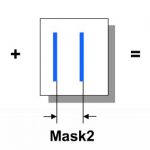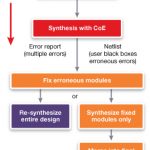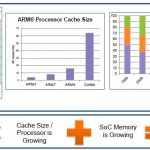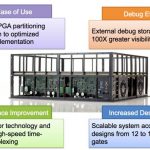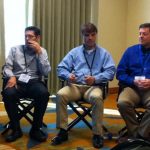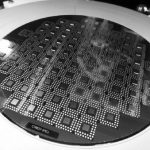It has been a year since my article Semiconductor Landscape in Jan 2012 I wanted to look back into the major events over the year and then anticipate what’s in store going forward. What has happened over the year is much more than what I could foresee. Major consolidation in EDA space – Synopsys acquired Magma, SpringSoft, Ciranova,… Read More
Tag: synopsys
FinFET Modeling and Extraction at 16-nm
In 2012 FinFET is one of the most talked about MOS technologies of the year because traditional planar CMOS has slowed down on scaling below the 28nm node. To learn more about FinFET process modeling I attended a Synopsys webinar where Bari Biswas presented for about 42 minutes include a Q&A portion at the end.
Bari Biswas, Synopsys… Read More
A Brief History of Synopsys
One of the largest software companies in the world, Synopsys is a market and technology leader in the development and sale of electronic design automation (EDA) tools and semiconductor intellectual property (IP). Synopsys is also a strong supporter of local education through the Synopsys Outreach Foundation. Each year in multiple… Read More
Double Patterning Verification
You can’t have failed to notice that 20nm is coming. There are a huge number of things that are different about 20nm from 28nm, but far and away the biggest is the need for double patterning. You probably know what this is by now, but just in case, here is a quick summary.
Lithography is done using 193nm light. Today we use immersion… Read More
Second FPGA to the right, and straight on ‘til it works
In a fantasy world where there were no coding errors or integration issues, FPGA designs would fly straight through synthesis easily and quickly. Maybe that world does exist somewhere. For the rest of us, who have experienced the agony of running a large FPGA design – again – only to find another error and have to start over, there … Read More
How much SRAM proportion could be integrated in SoC at 20 nm and below?
Once upon a time, ASIC designers were integrating memories in their design (using a memory compiler being part of the design tools provided by the ASIC vendor), then they had to make the memory observable, controllable… and start developing the test program for the function, not a very enthusiastic task (“AAAA” and “5555” and other… Read More
Next Generation FPGA Prototyping
One technology that has quietly gone mainstream in semiconductor design is FPGA prototyping. That is, using an FPGA version of the design to run extensive verification. There are two approaches to doing this. The first way is simply to build an prototype board, buy some FPGAs from Xilinx or Altera and do everything yourself. The… Read More
Simulation: Expert Insights into Modeling Microcontrollers @ Renesas DevCon
“Simulation: Expert Insights into Modeling Microcontrollers” was the recent panel hot topic at Renesas DevCon2012, featuring Paolo Giustoof GM, Mark Ramseyerof Renesas, Marc Serughettiof Synopsys, Jay Yantchevof ASTC / VWorks, and Simon Davidmannof Imperas.
… Read More
TSMC dilemma: Cadence, Mentor or Synopsys?
Looking at the Press Release (PR) flow, it was interesting to see how TSMC has solved a communication dilemma. At first, let’s precise that #1 Silicon foundry has to work with each of the big three EDA companies. As a foundry, you don’t want to lose any customer, and then you support every major design flow. Choosing another strategy… Read More
Laker3 in TSMC 20nm Reference Flow
SpringSoft, soon to be part of Synopsys but officially still a separate company for now, just announced that Laker[SUP]3[/SUP], the third generation of their layout product family, is featured in TSMC’s 20nm Custom Reference Flow.
Laker 20nm advancements include new double patterning-aware design and voltage-dependent… Read More





